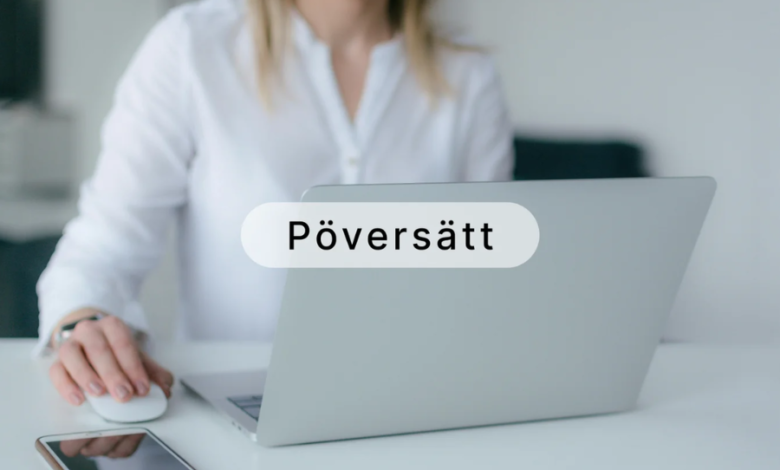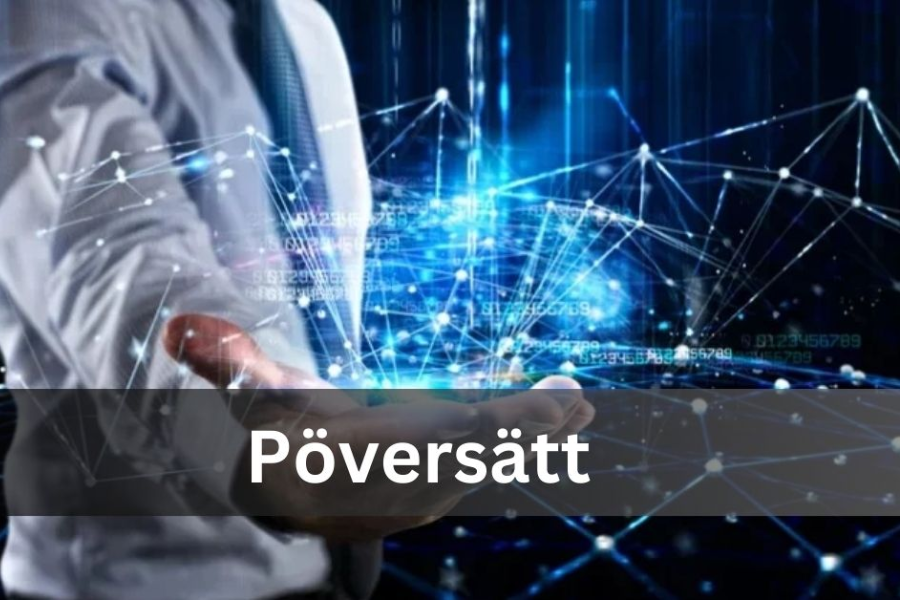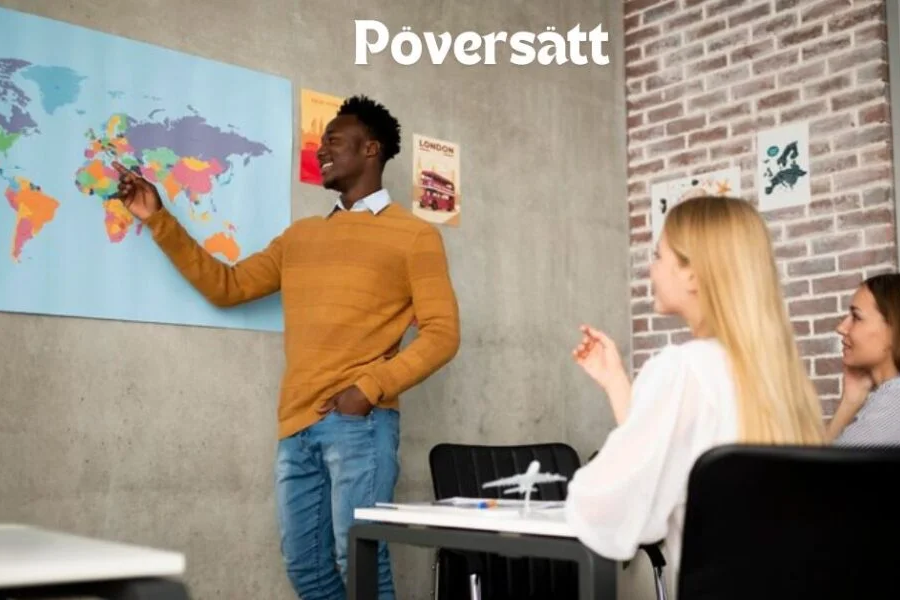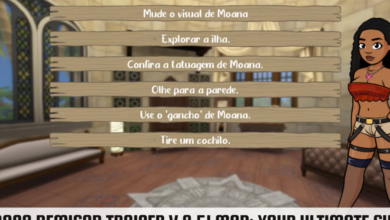Unlocking the Power of Pöversätt: Combining Human Expertise and Technology

Introduction
In today’s interconnected world, effective communication across languages has become essential. Enter Pöversätt, an innovative approach that combines human expertise with advanced technologies to bridge language barriers. This method is more than just a tool—it is a crucial facilitator of understanding between cultures, playing a vital role in various sectors like business, travel, and international diplomacy.
As globalization continues to evolve, so does the need for seamless, accurate translation solutions. Pöversätt is unique in that it integrates traditional human translation with cutting-edge technology, offering a comprehensive solution for modern communication needs.
What Is Pöversätt?
At its core, Pöversätt refers to the art and science of translating words and ideas from one language to another. It’s a process that ensures messages, emotions, and information are shared effectively across cultural and linguistic divides.
Whether for business, personal communication, or global collaborations, Pöversätt is essential for breaking down language barriers and fostering understanding. By using both human skill and technological advancements, it guarantees that language is not a hindrance but a tool for connection.
Why Pöversätt Matters in a Globalized World
As our world becomes more interconnected, the demand for clear and precise translation grows. Pöversätt plays a critical role in enabling effective communication, ensuring that ideas and messages transcend borders.
Whether it’s businesses seeking to expand into new markets or individuals building relationships across cultures, Pöversätt makes it possible. It doesn’t just translate words—it builds bridges between people, fostering greater collaboration and inclusivity on a global scale.
The Different Methods of Pöversätt
Pöversätt uses a range of methods tailored to different needs. From human translators who bring nuance and cultural understanding to machine translation that delivers speed and efficiency, each approach has its strengths.
Human Translation:
Human translation relies on skilled professionals who understand not just the words but also the cultural and emotional nuances behind them. These translators capture the tone and context of the original text, ensuring the message resonates authentically with the target audience. This method is especially valuable for complex texts where precision and cultural sensitivity are essential.
Machine Translation:
Machine translation has revolutionized the field, providing fast and efficient solutions for everyday translation needs. By using algorithms and large databases, machines can quickly convert text from one language to another. However, while machine translation is incredibly fast, it may still struggle with context, idioms, and emotional subtleties.
Hybrid Translation:
The hybrid method combines the strengths of both human and machine translation. By using AI to handle the bulk of the work and human translators to refine and ensure cultural accuracy, hybrid translation offers the best of both worlds. It’s particularly useful for businesses that need both speed and precision in their multilingual communications.
The Rise of Machine Translation
Advances in machine translation have made it more accurate and reliable than ever before. With the development of neural networks and deep learning, machines can now grasp context and idiomatic expressions more effectively, providing more natural-sounding translations.
These advancements are helping businesses communicate seamlessly with global audiences, opening new opportunities for cross-cultural interaction. The ongoing evolution of machine translation continues to shape the way we connect across languages.
Challenges in Pöversätt and Opportunities for Growth
Despite the many advancements in translation, several challenges remain. Nuances in language can be difficult to translate accurately, and cultural differences may lead to misunderstandings. Translators need to be sensitive to both linguistic and cultural contexts to ensure that the message is conveyed correctly.
On the flip side, these challenges also present opportunities. As the demand for multilingual communication grows, so does the need for innovative solutions that can bridge these gaps. Businesses and organizations that embrace advanced translation methods will be better positioned to reach new audiences and foster deeper connections across the globe.
Navigating Linguistic and Cultural Barriers
Language is more than just words—it’s a reflection of culture, history, and identity. Translating idioms, regional expressions, or humor can be particularly tricky, as what works in one language may not make sense in another. Understanding these linguistic subtleties is crucial for effective communication.
Similarly, cultural differences can impact translation. Each culture has its own norms and values, and what is considered polite or appropriate in one culture may be misunderstood in another. Translators must be aware of these cultural nuances to avoid miscommunication.
The Impact of Technology on Pöversätt
Technology has dramatically transformed the world of translation. Tools like Translation Memory Systems (TMS) allow translators to store previously translated segments, ensuring consistency across large projects. This makes translation faster and more efficient, especially for repetitive content.
Additionally, computer-assisted translation tools have become essential for professional translators, offering automated suggestions and glossaries that help maintain accuracy and speed. With the continued development of AI and machine learning, real-time translation is becoming increasingly feasible, further breaking down language barriers in our fast-paced world.
The Future of Translation: Real-Time and Crowdsourced Solutions
Real-time translation tools are already changing the way we communicate across languages. These technologies allow users to have live conversations in different languages, making global communication more accessible than ever.
Crowdsourced translation is another emerging trend. By leveraging the knowledge of native speakers, this method fosters community involvement and provides more culturally accurate translations. However, it also requires careful management to maintain quality and consistency.
FAQs:
What is Pöversätt?
Pöversätt refers to the process of translation, enabling communication across different languages. It utilizes a blend of human expertise and technological tools to bridge language barriers effectively.
How does Pöversätt differ from traditional translation?
Pöversätt combines human translators with advanced technology, offering a hybrid approach. This method ensures both the accuracy and cultural relevance that human translators provide, alongside the speed and efficiency of machine translation.
What are the main methods used in Pöversätt?
The three primary methods include human translation (best for nuanced and complex texts), machine translation (for quick and automated solutions), and hybrid translation, which blends both human and machine efforts.
What challenges does Pöversätt face?
Key challenges include handling linguistic nuances like idioms or dialects, overcoming cultural differences, and addressing the limitations of technology in maintaining context and accuracy.
How has technology impacted Pöversätt?
Technology has revolutionized translation by introducing tools like Translation Memory Systems, AI, and machine learning. These innovations have improved the speed, accuracy, and fluency of translations while enabling real-time communication across languages.
What is hybrid translation?
Hybrid translation is a combination of human and machine translation. Machines handle the bulk of the text conversion, while human translators refine the output to ensure cultural appropriateness and accuracy.
How does Pöversätt handle cultural differences?
Human translators, who understand the cultural context, ensure that translations are not only accurate but also culturally relevant. This approach prevents misinterpretations and fosters deeper understanding.
What is the future of Pöversätt?
The future lies in further integration of AI and real-time translation tools. These advancements will continue to improve global communication, making it more seamless and accessible.
Conclusion
Pöversätt represents the future of translation by blending human insight with technological innovation. As globalization expands, effective communication across languages is more crucial than ever. By utilizing methods like human translation, machine translation, and hybrid approaches, Pöversätt ensures that linguistic and cultural nuances are respected while delivering fast, accurate translations.
Whether it’s for business, travel, or personal communication, Pöversätt plays a vital role in breaking down language barriers. As technology continues to advance, Pöversätt will only grow in importance, making our global interactions smoother, more inclusive, and more meaningful.




